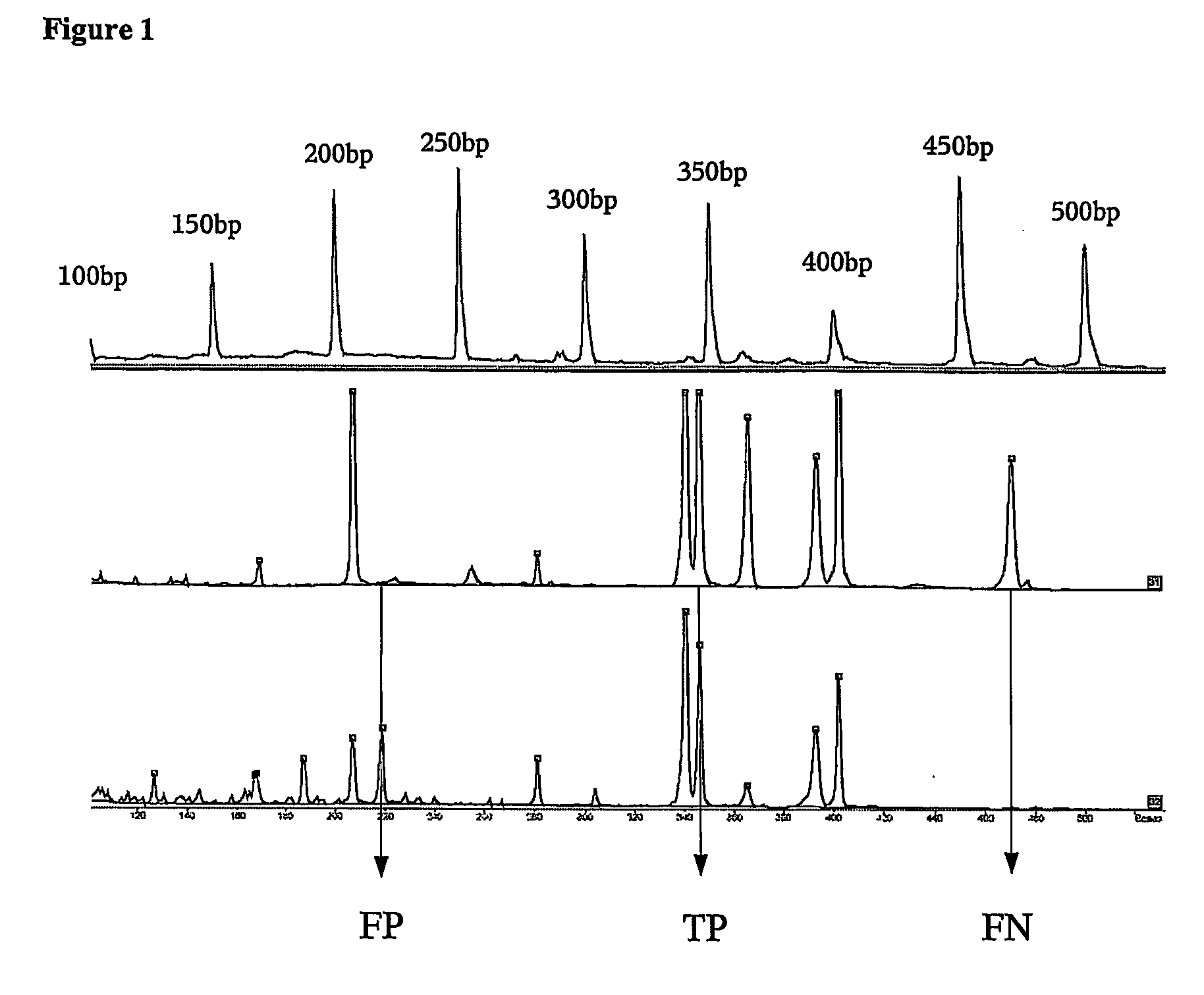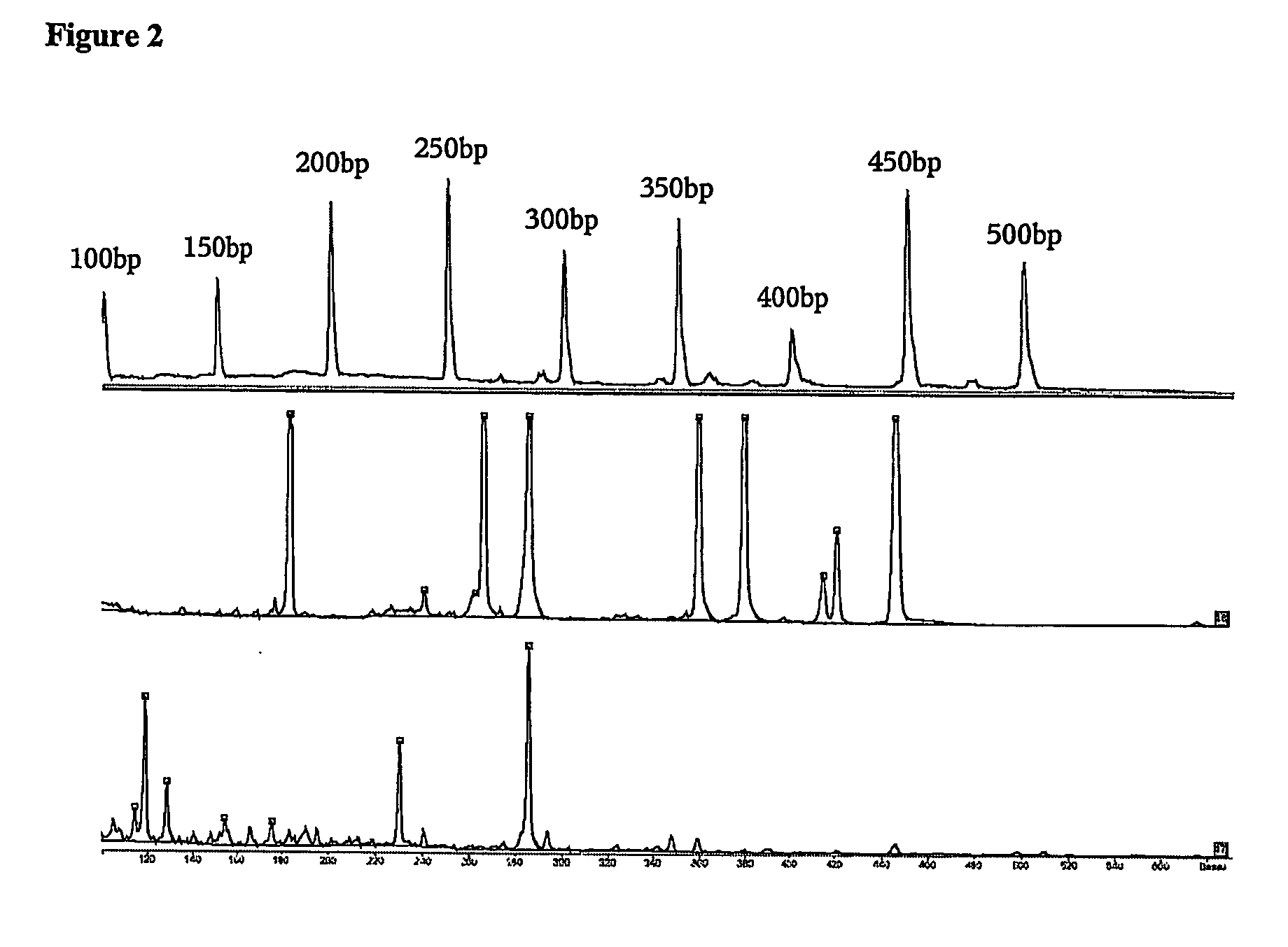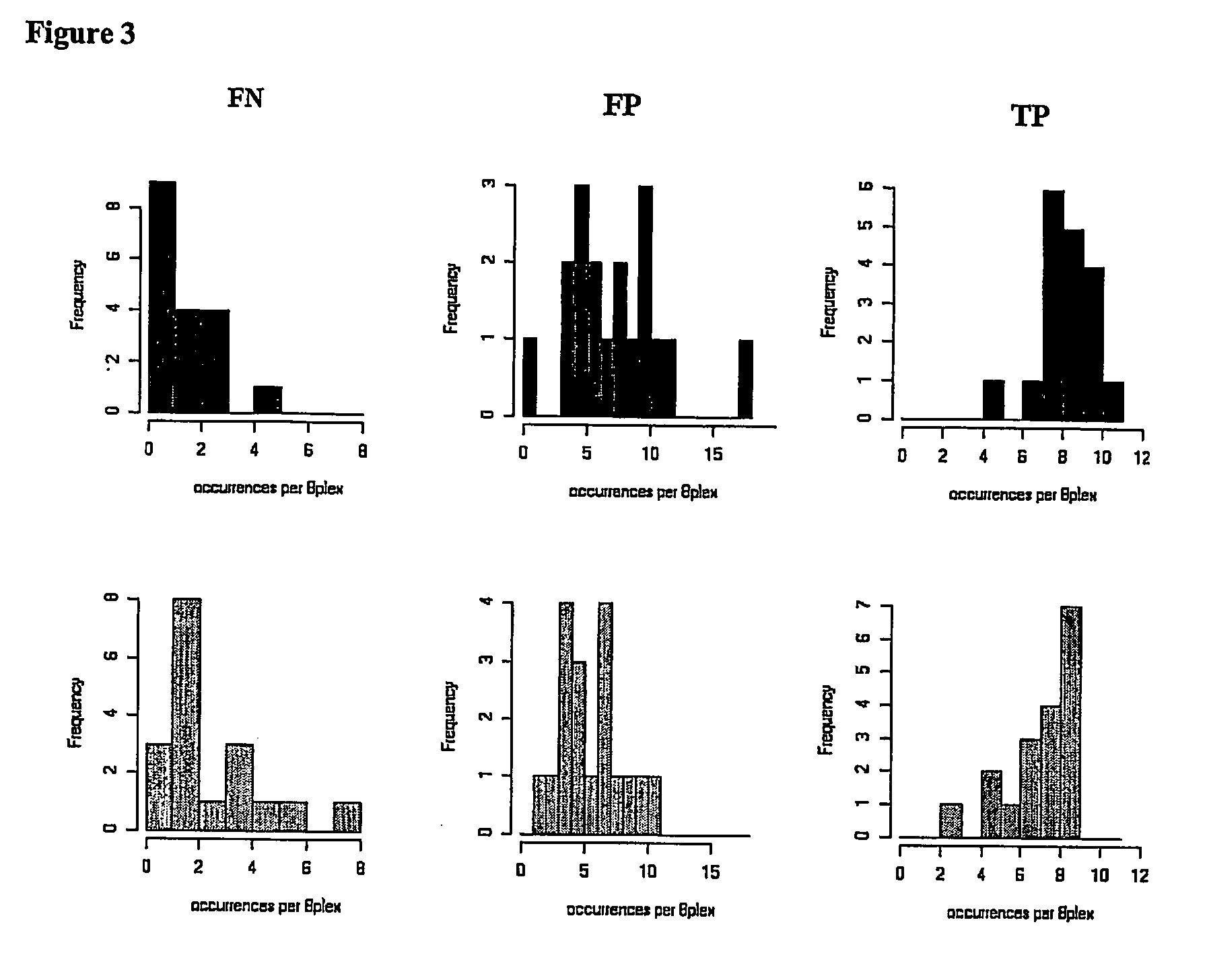Method for amplification of nucleic acids of low complexity
a nucleic acid and low complexity technology, applied in the field of gene engineering, molecular biology and computer science, can solve the problems of methylated cytosine or unmethylated cytosine, cannot be identified by a normal sequencing reaction, cannot solve the problem of amplification of low complexity nucleic acids, etc., to achieve the effect of reducing the number of amplifications, reducing the number of methyl
- Summary
- Abstract
- Description
- Claims
- Application Information
AI Technical Summary
Benefits of technology
Problems solved by technology
Method used
Image
Examples
example
[0146] Here we present experimental data that shows that multiplex PCRs designed with a tool according to this invention are more successful compared to multiplex PCRs not designed in this manner.
[0147] It is the aim of the experiment to amplify 40 different nucleic acids. The genomic regions of interest are given in the sequence protocol (SEQ ID 41-80). These genomic sequences were translated into their bisulfite converted versions and served as templates for amplification of specific regions with the primer sequences described as follows.
[0148] Primer molecule pairs used for single PCRs were originally designed with the use of the standard primer design program PRIMER3 (as mentioned in the description). The criteria used in that step will not be discussed in detail. This selection however provides several possible primer pairs per amplificate. Following the present invention these primer pairs were selected further, according to the following criteria: [0149] The restriction enz...
PUM
| Property | Measurement | Unit |
|---|---|---|
| temperature | aaaaa | aaaaa |
| melting temperature | aaaaa | aaaaa |
| melting temperature | aaaaa | aaaaa |
Abstract
Description
Claims
Application Information
 Login to View More
Login to View More - R&D
- Intellectual Property
- Life Sciences
- Materials
- Tech Scout
- Unparalleled Data Quality
- Higher Quality Content
- 60% Fewer Hallucinations
Browse by: Latest US Patents, China's latest patents, Technical Efficacy Thesaurus, Application Domain, Technology Topic, Popular Technical Reports.
© 2025 PatSnap. All rights reserved.Legal|Privacy policy|Modern Slavery Act Transparency Statement|Sitemap|About US| Contact US: help@patsnap.com



